- Administrator
- Albums and Singles
 The new EP from Andy Cabic’s group Vetiver is a subdued affair.Cabic and Vetiver are best known for their Devendra Banhart connection(Banhart performed on Vetiver’s self titled album and Cabic is now partof Banhart’s band, Hairy Fairy).
The new EP from Andy Cabic’s group Vetiver is a subdued affair.Cabic and Vetiver are best known for their Devendra Banhart connection(Banhart performed on Vetiver’s self titled album and Cabic is now partof Banhart’s band, Hairy Fairy).
Betweenis a five track collection of home recordings, live cuts and a radioperformance. The beauty of Vetiver gets to shine more on this CD thenon the album which I found good but a little bogged down by gueststars. Every track seems to belong together on this EP, which I thinkis thanks to the more stable line up. The small bit of overlap between Between and Vetiveris a live radio version of “Belles.” Compared to the studio versionthere is superficially not much of a difference, the studio one is abit more polished whereas this radio version is far more intimate.Cabic sounds like a more serious and grown up songwriter compared tohis compadre Banhart, more dignified country singer than flower childwailer. “Been So Long” is one of the finest Vetiver songs I’ve heard,the drums are almost tabla-like and background harmony vocals runthrough the song like a thread of silk. Normally the sound of flutesleaves me cold but the flute at the end of “Been So Long” fits like aglove. “Maureen” is a slightly tinny sounding live recording, justaround bootleg quality but all the more delicate for it. “Save Me APlace” stays faithful to theoriginal Fleetwood Mac song, but it is paced just a little slower. When I played the albumfirst I didn’t even notice it was a cover, assuming it was familiarbecause it was from the Vetiver album. It was only later I saw it was acover, it fits in so well with Cabic’s style of writing. “Busted(Brokedown Version)” is where the country vibe reaches its peak, therough recording makes it sound like a forgotten Neil Young number fromhis Harvest-era. I can find no faults with this CD apart fromits length, as I would have liked more than fifteen minutes worth of music,but as various teachers over the years have drummed into me, it isquality not quantity.
samples:
Read More
- Administrator
- Albums and Singles
 Witha list of remixers like Prefuse 73, Four Tet, and Danger Mouse as theprinciple selling point, I expected this single from Pedro to beindulgent or repetitive, but thankfully it is neither.
Witha list of remixers like Prefuse 73, Four Tet, and Danger Mouse as theprinciple selling point, I expected this single from Pedro to beindulgent or repetitive, but thankfully it is neither.
Melodic
Okay, so the 21+ minute remix by Four Tet is a little indulgent asit sounds like an entirely separate piece of music from the Pedrooriginal, but even that opus works well alongside the rest of thiscollection of slightly folky, slightly funky takes on "Fear &Resilience." Danger Mouse turns in the most commercially approachableversion by jazzing the Pedro original up with some rare groove samplesthat wouldn't sound out of place on a Tribe Called Quest record.Prefuse 73 cuts and splices fragments of the original with his typicalcollage of riffs and hip hop detritus to produce something post-modernenough to keep it from sounding like a retread. Pedro's own versionanchors the disc and proves perhaps the most adventurous in its rangeof sound, while the Home Skillet mix deconstructs the source intoshimmering digital noise and wavering synths. Though the remixers heretook entirely predictable routes, all of the mixes are handled withenough love and attention to quality that the disc works as a wholecollection and not just as a single theme repeated a few too manytimes. It's certainly gotten me interested in checking out more fromPedro, which is what an endeavor like this is intended to do, so toPedro and Melodic I have to say: "mission accomplished."
samples:
Read More
- Administrator
- Albums and Singles
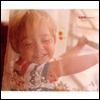 Though nowhere near as willfully experimental as some of hisearlier releases, Resilience promises to be an album that will find aprominent place in Kid 606’s body of work as his most meditative and(egads!) mature.
Though nowhere near as willfully experimental as some of hisearlier releases, Resilience promises to be an album that will find aprominent place in Kid 606’s body of work as his most meditative and(egads!) mature.
TigerBeat 6
When I listen to Kid 606, I look forward to having my mind melted. Iexpect schizoid rhythms, caustic noise, and unrelenting beats to kickmy ass around my room and to make me dance like a marionette. And forthe most part, that’s just what Kid 606 has done. Over the course ofseven years he’s perfected his mish-mash agro style, which placed apremium on aggression, noisy experimentation, and spliced samples. SoResilience was a total sucker punch for me, which is probably just howthe Kid intended it to be. Simplicity is his M.O. on this release, andthe songs barely come close to touching upon his schizophrenic mash-upsof previous releases. “Done With the Scene” opens the album and slowlybuilds upon a series of panning synthesizer samples. The rhythm, thoughsedate, still provides enough kick to prevent the song from languishingand does a good job of not interrupting the washes of synthesizer aboveit. This leads right into “Spanish Song,” with its near disco readypercussion and random vocal samples, sounds like a club jam slowed downfor the benefit of the weary. After the high standards set by thesesongs, the album splits itself between material that is interesting andwell executed and material that is not. An example of the latter can befound on “Phoenix Riddim” which abuses its reggae guitar sample andquickly wears out its welcome. Similarly, “Sugarcoated” is stretchedfar to thin, so that by the time it ends I had forgotten what had madethe track appealing in the first place. But while there are severalless then stellar moments on Resilience, they are balanced out bytracks like “Xmas Funk,” where Kid 606 varies the tempo and builds upona variety of loops rather then just one. Elsewhere, there is“Cascadia,” with its synthesizer squelches and distant rhythm track.While the song is far from anything Kid 606 has attempted before, itnonetheless can rank up alongside with some of his finest work. Thoughseveral of the songs on have been culled from earlier releases it wouldbe unfair to label this a rarities or singles collection. Ultimately,Resilience is a record that allows Kid 606 to spread himself into otherstyles.
samples:
Read More
- Administrator
- Albums and Singles
 On his first solo release, Tamburo’smastery of the guitar is on clear display. The five tracks arebeautifully resigned compositions which explore not just the musicalpossibilities of the acoustic guitar, but also its ability to—pardonthe cliché—speak to the soul.
On his first solo release, Tamburo’smastery of the guitar is on clear display. The five tracks arebeautifully resigned compositions which explore not just the musicalpossibilities of the acoustic guitar, but also its ability to—pardonthe cliché—speak to the soul.The Music Fellowship
While only one song here manages tocomplete its journey in less than ten minutes, the rest meander througha variety of well-executed ideas that make their epic lengths more of ablessing then a curse. “Adam’s Fruit Temptation” begins with fairlyconventional guitar picking before being overtaken by a wash ofelectronic effects. It begins its next section with a slightly menacingbanjo that is carried by an undercurrent of electronic washes and organdrones. An up-tempo guitar jig follows, with its roots firmly plantedin the tradition of Appalachian folk. As it settles into a repeatedmelodic figure, an organ slowly swells up and provides backing.“Something About Dangerous Women” is a slow, sinister work thatgradually builds steam over a series of harmonic figures, beforefalling into minor key picking. The track is far sparser then “Adam’sFruit Temptation” and in addition to his six string acoustic, Tamburodeploys a droning ebow here to back him up at various points. As hispicking gradually intensifies, Tamburo throws in more notes to heightenthe sense of unease. For other players, this could have proved to be acostly mistake, but Tamburo knows exactly where to cut it. Tamburofollows the breathlessness of “Dangerous Women” with “My Time MachineMoves Slower Without You,” which cascades upon a wash of electricguitar effects. The song hues closer to the shoegazer haze of My BloodyValentine than the rest of the album, but is a fitting and beautifulcoda, with a spine tingling guitar part that appears throughout. Thoughit would be tempting to lump Mike Tamburo’s work with what is often(and erroneously) dubbed “freak folk,” the fact is that his music isfar more rooted in the traditions of American folk and blues to warrantsuch a label. Ultimately, the album’s success is rooted in bothTamburo’s masterful playing and his ability to not be pinned down by aparticular style or sound. Beating of the Rewound Son is a beautifulalbum that is just as comfortable exploring sun-drenched houses in thecountry as it is empty warehouses sitting along a polluted river, andit is the discoveries you can find here that which makes the album sorewarding.
samples:
Read More
- Administrator
- Albums and Singles
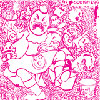 Likea sweet and sour sauce that's been haphazardly whipped together, KFC Coremanages to balance its hard, aggro side with its silly, playful side,despite the lack of effort that seems to have gone into some of theconstruction.
Likea sweet and sour sauce that's been haphazardly whipped together, KFC Coremanages to balance its hard, aggro side with its silly, playful side,despite the lack of effort that seems to have gone into some of theconstruction.
ADAADAT
This is aparty record built principally on the joke that its author and hisfriends love KFC and are willing to write songs about it. Sure, it's astupid premise, but DJ Scotch Egg isn't aiming for anything highconcept or deeply moving here. The tracks are all built around abackbone of skipping gabber beats and distorted noise and screamingmixed with video game melodies and 8-bit synth sounds, and while thecombination doesn't immediately sound inviting on paper—it works. What results is a fun, bouncy record that moves quicklybetween songs and interludes and manages tap into just the right amountof absurd energy to be worth listening to again and again. There aresome self-indulgent moments that take the KFC joke a little too far(like the hidden track at the end of the record that is a severalminute long conversation about KFC and Hare Krishnas and so on), butfor the most part even the forced theme and the juvenile humor don'tcome off as too overbearing. I've already picked out several tracksfrom this record to throw into my own DJ sets, which is certainly asign that DJ Scotch Egg has gotten something right here. I imagine thata crate full of records like this one that are fun but bordering ondisposable would get old really quickly, and to the gabber andspeedcore/breakcore aficionados out there, all of this may be old news,but I found KFC Core to be the perfect antidote to hardelectronic music that takes itself too seriously. There's a time forthat, but there's a time for this too, and right now I'm bouncing to aremix of the Tetris theme and I can't help but smile.
samples:
Read More
- Administrator
- Albums and Singles
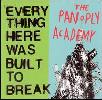 This release compiles various singles, covers,and odds and ends from the Bloomington-based post-hardcore group.
This release compiles various singles, covers,and odds and ends from the Bloomington-based post-hardcore group.Secretly Canadian
Though they would alter their name for each variation on the group(going from The Panoply Academy Glee Club to Corps of Engineers toLegionnaires), their sound remained essentially intact: spiralingsong-structures, angular hooks, and a sense of stylistic ADD. Presentedin reverse chronological order, Everything Here Was Built to Breakwillbe a welcome addition to any fan of the band. “Nom de Plume” opensthings up, slowly swelling to a crescendo of pounded piano, clean toneguitar picking, and trembling vocals while “Comfort,”matches prog-metal guitar chords with near operatic singing,interspersed with harsh post-punk scratches. These two previouslyunreleased songs showcase what the group was best at:post-hardcore styleguitar interplay and intricate drumming with a foot solidly grounded inpost-rock dynamics. Taken with another unreleased track, “Please Stray/Look Us in the Eyes,” (all three were intended to run together in alive setting) it seems clear that The Panoply Academy’s best attributeswere their ability to take seemingly disparate strains and make themmatch as if it were the most natural thing in the world. Working it’sway further into the past; the compilation reveals the beginnings ofThe Panoply Academy to be far more rooted in the bratty energy ofNation of Ulysses and Cap‘n Jazz then the more complex sound theywould pursue on their later recordings. “Remedial Symmetry” featuresmetronome precise drumming and a brain damaged seesaw guitar riff thatpropels the song ahead. These songs are great in their own right, butwhen they follow more polished efforts from the compilations firsthalf, it has a negative effect of making them seem inferior, ratherthen the basis for what was to come. Perhaps the most interestingaddition on Everything Here Built Was Built to Break is theinclusion of several covers the band recorded throughout their career.Their version of Nick Drake’s “Harvest Breed” manages to avoid a roteimitation by imbuing the song with a cold, electro heart. Meanwhile,their cover of Supertramp’s “Dreamer/ Crime of the Century” ishysterical, complete with gung-ho operatic vocals and anenthusiastically bashed piano solo. Most surprising though is theirtreatment of Country Joe and the Fish’s “I Feel Like I’m Fixing to DieRag” from Exotic Fever’s Don’t Know When I’ll Be Back Again Vietnam vetbenefit. The band strips the song of it’s jaunty country sound andinstead turns it into a slow funeral dirge while managing to keep allof the dark humor of the original intact. Secretly Canadian has done agreat service for fans who would be unlikely to find any of these songselsewhere. But for the rest of us who weren’t there sweating along tothem in a basement during their various tours of the US, it might beadvisable to start with the proper albums first, before seeking thisout.
samples:
Read More
- Administrator
- Albums and Singles
 Anyone who has seen 24 Hour Party People will probably remember severalscenes involving A Certain Ratio. At various points they get smearedwith sunless tanner, are told to dress like boy scouts, and play theinaugural show at Tony Wilson's towering pipedream to self-indulgence,the Hacienda, to an empty house.
Anyone who has seen 24 Hour Party People will probably remember severalscenes involving A Certain Ratio. At various points they get smearedwith sunless tanner, are told to dress like boy scouts, and play theinaugural show at Tony Wilson's towering pipedream to self-indulgence,the Hacienda, to an empty house.
The message that the film seems conveys is clear: A Certain Ratio werean amusing footnote in the story of Factory Records. Ignored as theirpeers in Joy Division and New Order gained popularity and influence,and all but forgotten by the time groups like the Happy Mondays camealong, it’s probably a safe bet to say that the majority of those whosaw 24 Hour Party People had no idea who A Certain Ratio were.This is a damn shame, as one listen to any of A Certain Ratio’s albumsfrom 1979 to about 1983 (when the group began to splinter apart) showsthat they were far ahead of the curve. 1980’s half four-track demos,half live cuts (from their tour with Talking Heads) The Graveyard andthe Ballroom pretty much predicts the recent dance-punk explosion, withthe band laying into precise, skittering funk inflected punk. By thetime of 1982’s I’d Like to See You Again, the band had tradedin the thin guitars and anxious vocals of Simon Topping for somethingfar more lush and organic. To say I was shocked at the difference insound and approach between The Graveyard and the Ballroom and I’d Like to See You Againwould be an understatement. Gone were the pent up vocals, wiry guitarsand urgent drumming, in their place were synthesizers, vocoders, andbig, fat bass lines. A Certain Ratio had always been influenced byAmerican funk and disco, but here that influence became more pronouncedthen ever. Opener “Touch” is perhaps the slickest, catchiest bit ofR&B that Parliament never recorded. “Hot Knights” features aswinging beat with some squishy analog synth to keep it buoyed, withsome fun nonsensical lyrics thrown in for good measure. Elsewhere,there are interesting experiments with vocoders, such as on thegraceful disco of “I’d Like to See You Again” and the more driving“Show Case.” The highlight though is “Axis,” which features some trulyjaw dropping bass work from Jeremy Kerr and grooves languidly on afoundation of tightly syncopated beats and well placed keyboard riffs.The song manages to incorporate not just the bands love of funk andR&B, but also reveals the influence of New York’s early 80selectro-dance scene, something the band had been listening toobsessively at the time. In addition to the eight original tracks, LTMhas also included five bonus tracks. While the original songs on I’dLike to See You Again were born mostly out of the bands fascinationwith American R&B, these five tracks display the growing influenceof Latin jazz (“Tumba Rhumba”), house music (“Knife Slits Water”), andthe cut and paste attitude of hip-hop (a remix of I’d Like to See YouAgain’s “Guess Who”). Though they don’t necessarily fit in with theoverall flow of the album, they nevertheless showcase the band’sinventive chops and strong sense of ensemble playing. Those who came toknow A Certain Ratio from their earlier, more punk influenced workmight be caught off guard or even put off by the songs here. Icertainly was. But it would be unfair to not to give this release theattention it deserves. While not as immediate or raw as anything foundon The Graveyard and the Ballroom, the songs on I’d Like to See You Again exhibit a strong sense of sophistication and stylistic development.
samples:
Read More
- Administrator
- Albums and Singles
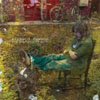 From this debut’s title, the simple typeface and ‘take me as Iam’ earthy tones of the artwork a pretty good picture can be drawn ofwhat Richard Dawson is all about; simplicity. Dawson manages to mergethe territories of traditional English music, Nick Drake miserablismsand a tipsy Daniel Johnston into an Autumn Folk collection of songsabout everyday life.
From this debut’s title, the simple typeface and ‘take me as Iam’ earthy tones of the artwork a pretty good picture can be drawn ofwhat Richard Dawson is all about; simplicity. Dawson manages to mergethe territories of traditional English music, Nick Drake miserablismsand a tipsy Daniel Johnston into an Autumn Folk collection of songsabout everyday life. Downbeat Records
More often than not the lyrics stick to undemanding rhymes aboutdaily existence with sundry peculiar tales and close to the bonedomestic stories from childhood thrown into the mix. Sounding a gooddeal wearier than his 23 years Dawson sounds like he’slooking back over a lifetime of memories.
samples
Read More
- Administrator
- Albums and Singles
 Nowadays, most people would associate the term "electronic music" withbedroom musicians and beardos tweaking samplers and laptops; runningsoftware packed with a ridiculous amount of synth pads and beats in avirtual studio environment. It's easy to overlook the fact that one ofthe more common elements in music from the latter half of the twentiethcentury, the electric guitar, was one of the earliest "electronic"instruments.
Nowadays, most people would associate the term "electronic music" withbedroom musicians and beardos tweaking samplers and laptops; runningsoftware packed with a ridiculous amount of synth pads and beats in avirtual studio environment. It's easy to overlook the fact that one ofthe more common elements in music from the latter half of the twentiethcentury, the electric guitar, was one of the earliest "electronic"instruments.Moving forward with that theory, the electric amplification of justabout any instrument would then be found to be performing electronicmusic. It's the subsequent treatments, compositions, orchestrations andarrangements that splinter the musics into their various cultures andclassifications. Hailing from Kinshasa, the capital city of theDemocratic Republic of Congo, Konono No1 are a musical and dancecollective who have taken somewhat of a reverse concept with theamplification of their likembes (traditional African thumb pianos) tocreate a unique sound. Formed 25 years ago by likembevirtuoso, Mingiedi, Konono No1 have changed the traditional soundassociated with the thumb piano in amplifying it with homemademicrophones and a sound system built using old car parts. Coupled withpots and pans percussion playing upbeat, traditional African rhythmsheld together with a steady pulse, the unexpected yet distinctdistorted tones of the various pitches of likembes are riffed by theirplayers as if they were rock guitarists: edgy and heavy-handed with abit of flash. Throw in some call and response chants and you've gothigh life in overdrive. Although tracks such as the opener "LufualaNdonga," "Masikulu," and "Ungudi Wele Wele" are fairly similar inarrangement, the various bass likembe patterns give each track adifferent feel with locked-in grooves that have the same hypnoticeffect of a great dub recording, despite the brisk tempo. Therepetitive motif of "Kule Kule" supports several polyrhythmic linesthat displace and resolve themselves in the spirit of such moderncomposers as Steve Reich. Even though a few of the same motifs cumriffs appear in multiple compositions on Congotronics,the likembe sounds and performances don't detract from their usage.These guys could play "Chopsticks" for a full seven minutes and stillmake it totally hip! I can only hope that Konono No1 someday make it toNorth America (oh, you lucky Europeans that got to see 'em withTortoise). I would imagine that the mix of visuals from the traditionaldancers and sounds from the musicians is the type of thing that mindsare blown by.
samples:
Read More
- Administrator
- Albums and Singles
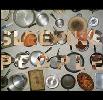 While Sleeping People are a talented group, with a secret weapon in theacrobatic drumming of Brandon Reif, the mathematical riffage and roughand tumble timekeeping strikes me as ho-hum and fairly bland. Theintricate fingerprints of Don Caballero, King Crimson, and any numberof duel guitar bands that recorded for Dischord throughout the 1990s areon clear display here.
While Sleeping People are a talented group, with a secret weapon in theacrobatic drumming of Brandon Reif, the mathematical riffage and roughand tumble timekeeping strikes me as ho-hum and fairly bland. Theintricate fingerprints of Don Caballero, King Crimson, and any numberof duel guitar bands that recorded for Dischord throughout the 1990s areon clear display here.Temporary Residence Limited
In essence, this is just post-punk posturing,with the guitars fighting a noisy battle for attention. “Blue Fly GreenFly” startsthings off on a good note, sounding like a wordless Jawbox b-side.Here, guitarists Kasey Boekholt and Joileah Maddock play off of oneanother nicely, providing busy lines that manage to not suffocate therest of the song. As is the case with most of these tracks, BrandonRaif’s intricate drumming is front and center, providing the songs witha strong anchor from which to build on. But while the majority of thesesongs are expertly played, they also feel rote. Songs like “Fripp forGirls” and “Johnny Depp” rattles off a thousand finger-tapped andhammered-on riffs, creating a stuttering, awkward series of melodies.The random guitar violence is kept in check throughout by the solidrhythm section, but this is hardly enough to keep my attention for afull six minutes. To be perfectly honest, Sleeping People are not doinganything beyond paying their respects to Shudder to Think, DonCaballero, and Oxes. And therein lays the problem with Sleeping People.While other instrumental rock bands use their instrumentation createbreathtaking soundscapes and works of high drama (e.g. Explosions inthe Sky, Do Make Say Think, etc), Sleeping People’s eponymous debutjust sounds like the semi-talented band down the hall that are stilllooking for a singer.
samples:
Read More
- Administrator
- Albums and Singles
 I’ve never really understood the glam-rock tag that Bobby Conn gotsidled with in his solo work. Sure, the dude and his band, the GlassGypsies, dress in sequins and gold lame stage outfits, all but invitingcomparison to the coke addled heyday of Ziggy Stardust.
I’ve never really understood the glam-rock tag that Bobby Conn gotsidled with in his solo work. Sure, the dude and his band, the GlassGypsies, dress in sequins and gold lame stage outfits, all but invitingcomparison to the coke addled heyday of Ziggy Stardust.Thrill Jockey
I suppose his albums invited this tag as well, as they always seemedpacked to the gills with ostentatious additions such as strings andhorns sections. In a live setting though (well, ok, “live in front of astudio audience.”), these songs take on a grimy sheen, and, simply put,kick ass. On “Angels,” the band throws down a furious groove, with Connnearly besting Ian Svenonius’ Prince impression. For anyone who stillmaintains that Conn and the Glass Gypsies are nothing more thenglam-rock opportunists, the kiss off comes on the next track, “We Comein Peace.” It’s a righteous protest anthem that finds Conn spouting offinspired couplets like “We are your friends, we come in peace, webrought our guns to set you free” and sounds a lot like the searingprotest rock that Ted Leo and the Pharmacists have been performinglately. The opening wah-wah guitar freak out of “Cashing Objections”whispers dirty come-ons in my ear, drawing me in, while the rest of thesong is nailed down by the excellent interplay of lead-guitarist Sleddand violinist Monica BouBou. Overall, the stylistic diversity the banddisplays in the quasi-live setting here is impressive, as the bandjumps from burning rockers (“Style I Need”) to over-the-top arena fare(“White Bread”) to dirty funk jams (“Axis ’67 Part 2”). Throughout, thesongs feature incisive and often-humorous lyrics performed with Conn’sbreathless enthusiasm which skewer the current political and culturalclimate mercilessly. While a lot of people have already written offConn for a being crappy composite of mid-1970s music trends, they’d beill advised to ignore this release. Sure, in a studio, Conn’s eyes areoften bigger then his stomach, but on Live Classics Vol. 1 he and hisband are ferocious and terse, everything great rock and roll should be.
samples:
Read More

